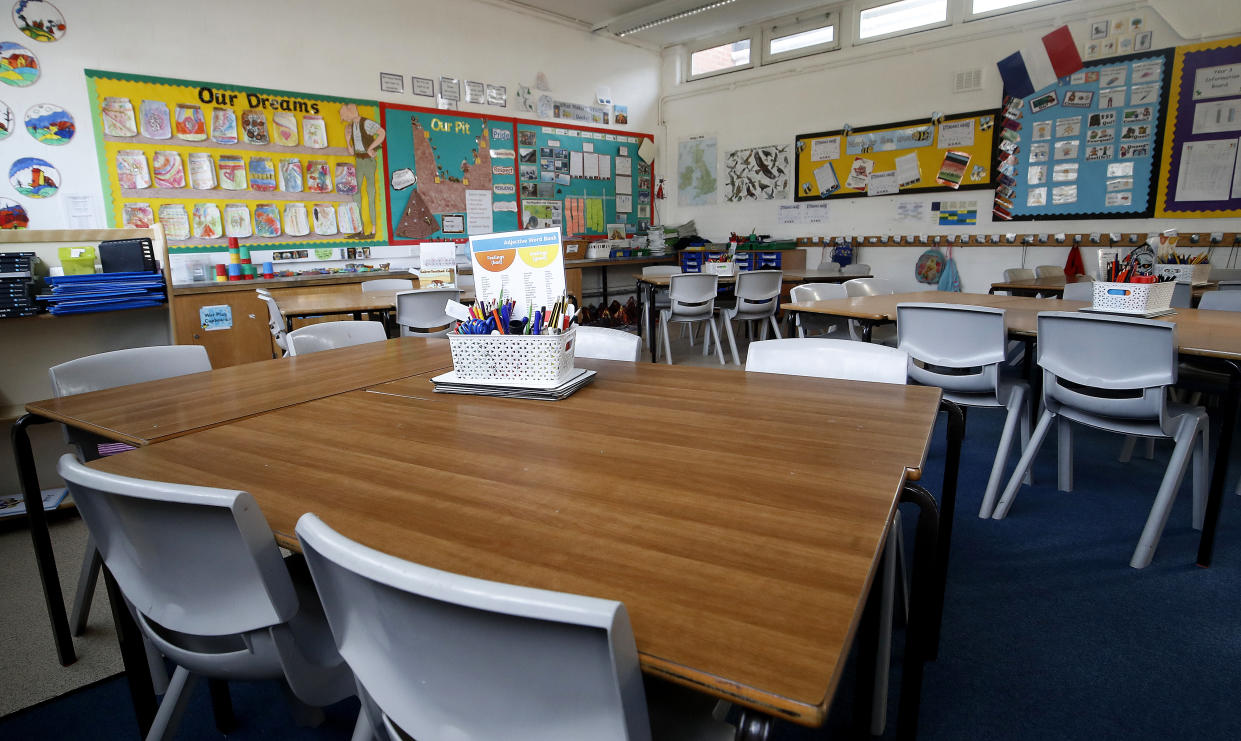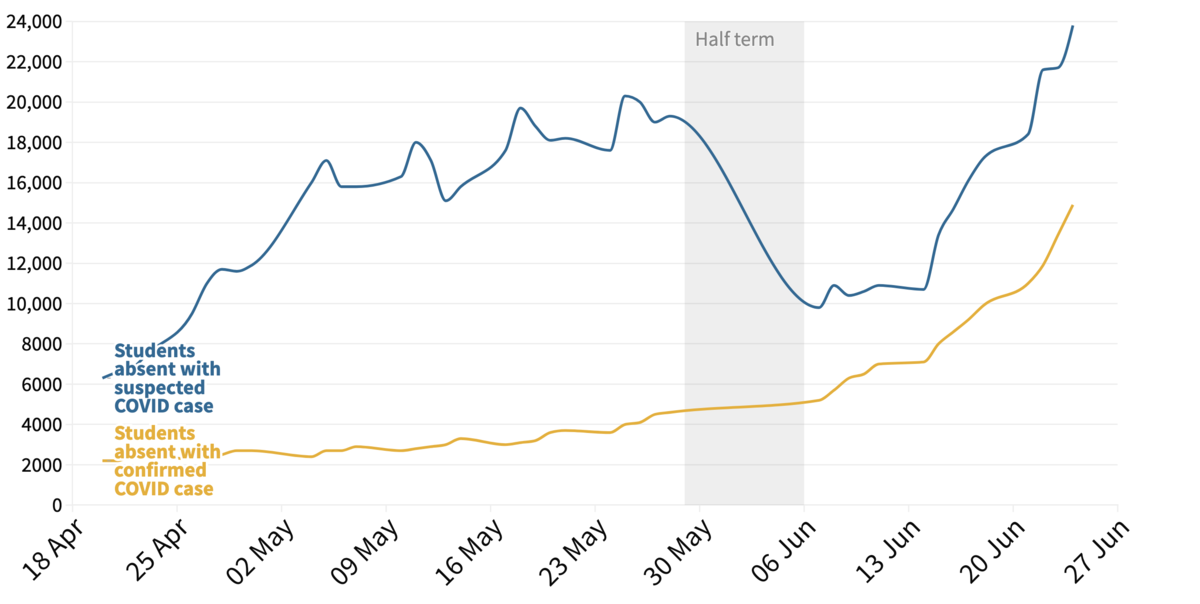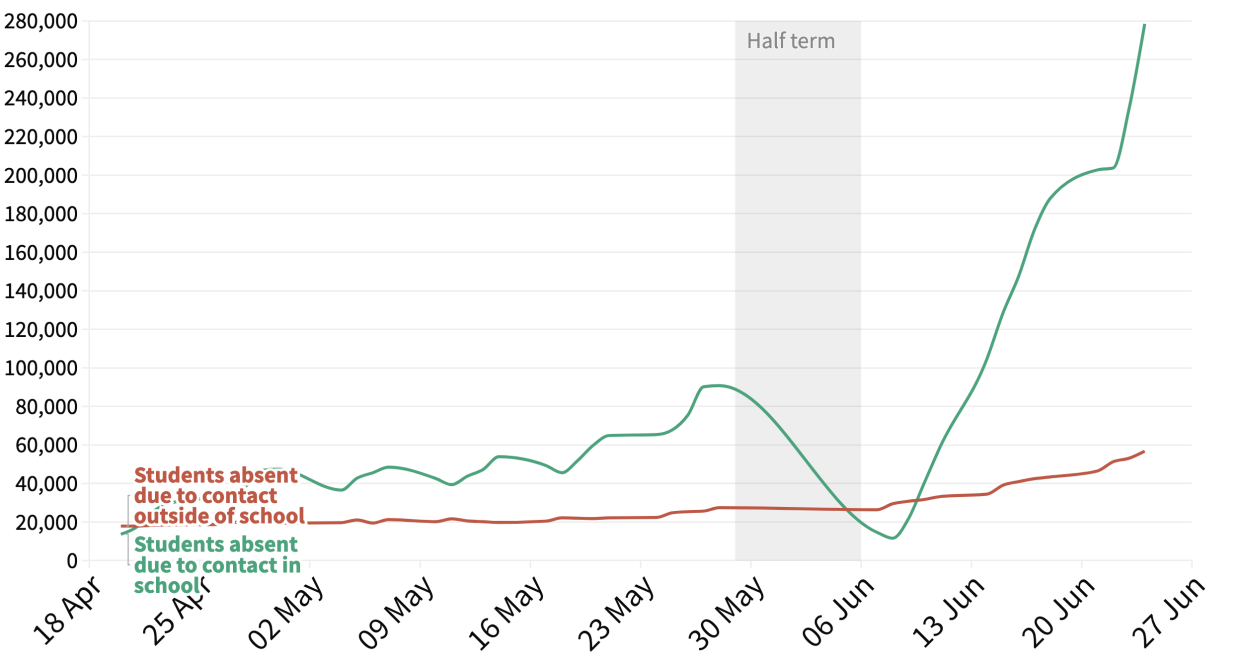The charts that show the worrying impact of the third wave on schoolchildren

Absences from school due to reasons related to coronavirus have hit their highest rate since schools reopened in March.
About 374,000 pupils missed school in the last week after testing positive for coronavirus or coming into contact with a positive case, the latest figures show.
It comes amid a surge in cases across the UK as the Delta variant, first detected in India, drives infection numbers up.
Currently, children have to self-isolate for 10 days if another pupil in their bubble tests positive for the virus, but concerns are growing over the rising numbers missing school.
Read: Warning that Europe faces fourth COVID wave this summer caused by Delta variant
Meanwhile, the Department for Education has confirmed that school isolation rules could be brought to an end this autumn and replaced with regular testing.
These charts show how education is being hit by England's third wave of coronavirus.
Pupils testing positive
This chart shows the number of students in state schools who have missed school after testing positive or because they suspect they have the virus.

Since the beginning of June, the number of pupils with confirmed cases – shown in yellow – has soared to 14,900.
Meanwhile, the number self-isolating due to a suspected case – shown in blue – has hit 26,800.
Pupils having to isolate
This chart shows how the number of children having to isolate after coming into contact with a positive case has soared in the last three weeks.

At the last count, around 278,500 children were self-isolating due to possible contact with a COVID-19 case inside of school, shown by the green line.
Meanwhile, a further 56,800 pupils were self-isolating after possible contact with a positive tase outside of school – shown in green.
The soaring number of students isolating due to the bubble system has sparked a debate about whether it should be scrapped.
The new children’s commissioner for England, Dame Rachel de Souza, is among those calling for bubble arrangements and self-isolation for school pupils to end as soon as possible.
Watch: 375,000 school pupils absence absent over virus
She said there was an urgent need for children to get back to normal as lockdown restrictions had been a “real trauma” for many young people.
In an interview with the Daily Telegraph, Dame Rachel said the need for children to go in and out of isolation was “a really big issue” that was proving “incredibly frustrating” for pupils and teachers alike.
“With bubbles, I think everybody would like it if we could get back to normal, as soon as possible. Obviously we have to be safe, and we have to take advice, but it’s very very restrictive,” she said.
“The experience of lockdown has been a real trauma, and I think we shouldn’t underestimate it. Children are really troubled, and it’s right across the board.”
On Monday, new health secretary Sajid Javid said he had asked for “fresh advice” on the issue, adding that the policy is “having a huge knock-on impact” on children’s education.
The worst-hit areas
This chart shows the areas in England where the numbers of students missing school due to COVID are currently the highest.

In Bolton, which has been a Delta variant hotspot though case numbers are now declining, almost a third of all secondary school pupils have been self-isolating.
Meanwhile, Middlesbrough has seen 22.1% and Blackburn with Darwen has seen 13% of students self-isolating.
Watch: Parents divided over proposals to help schoolchildren catch up



